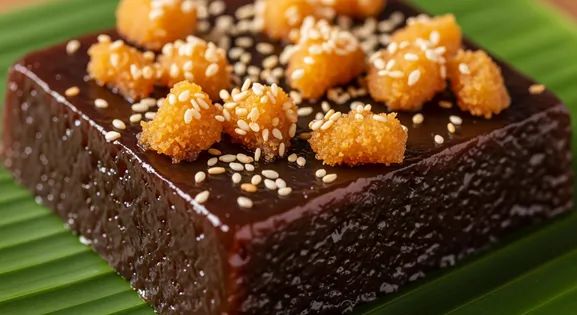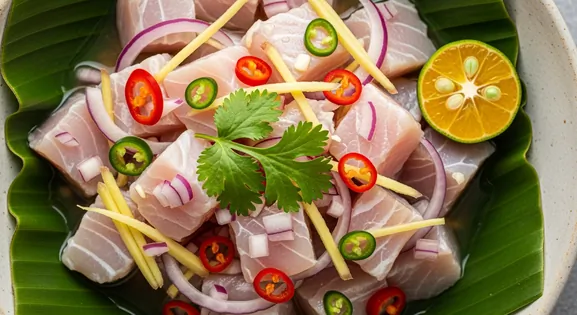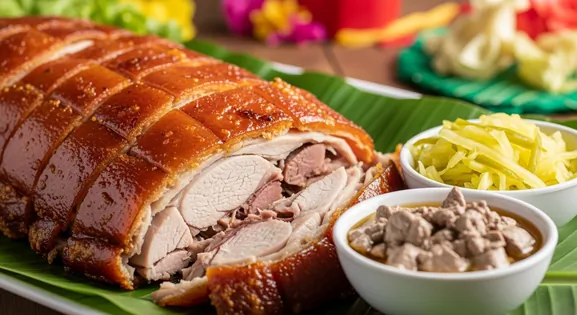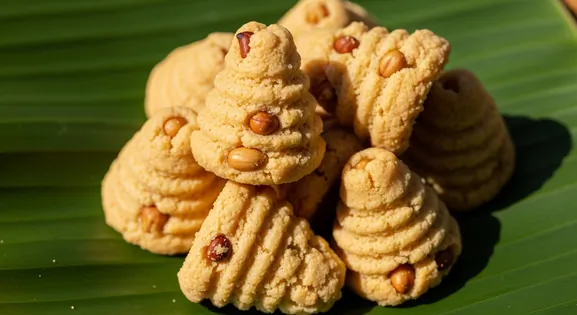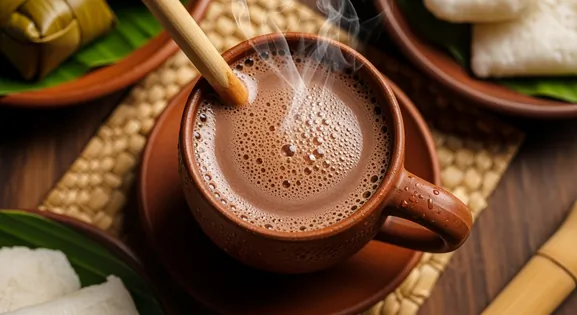Puto Maya in Bohol
Puto Maya
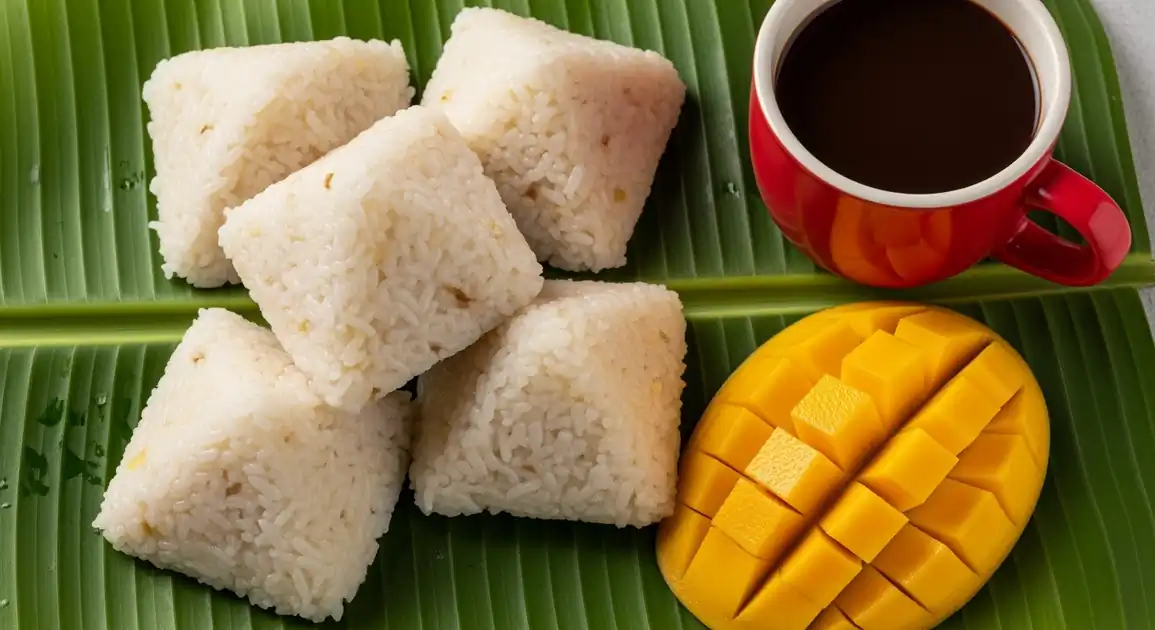
Puto Maya: A Local Culinary Staple
Stepping into Bohol's morning markets, the aroma of freshly steamed puto maya is unmistakable. This humble sticky rice cake, often enjoyed with ripe mangoes and thick sikwate, is a quintessential Boholano breakfast. It's a simple yet profound culinary experience that truly connects you to the island's local rhythm.
New to Puto Maya? Learn all about its history in our complete guide.
Culture and Customs
Local Significance
In Bohol, puto maya is more than food – it's a cultural ambassador and source of local pride. Boholanos consider their version, particularly served with the complete mango and sikwate pairing, to be the definitive preparation of this dish.
Eating Customs
- Boholanos emphasize the importance of eating the three components (puto maya, mango, sikwate) together rather than separately.
- Many locals insist on using only the sweet yellow Carabao mango variety as the proper accompaniment.
- Traditional Boholano breakfast ritual often starts with sikwate to warm the stomach, followed by alternating bites of puto maya and mango.
Twists on a Classic
Tapol (Purple) Puto Maya
This distinctly Boholano variation uses black or purple glutinous rice, producing a dramatic color and slightly nuttier flavor. Especially popular in the eastern parts of Bohol.
Extra-Ginger Boholano Style
Some traditional Bohol vendors are known for using a more generous amount of ginger, creating a more pronounced spicy warmth in their version.
Tourist-friendly Plated Sets
Higher-end restaurants in Tagbilaran and Panglao serve elaborate presentations with premium mangoes, artisanal sikwate, and sometimes additional garnishes like toasted coconut flakes.
Key Tips for Enjoying This Dish
For the freshest and most authentic puto maya experience, head to Tagbilaran Public Market between 5 AM and 7 AM. This is where locals go, ensuring you get the best quality and a true taste of Boholano breakfast culture.
Many vendors offer puto maya with a choice of coffee or sikwate (hot chocolate). Always opt for the sikwate, especially if it's made from local 'tablea' (cacao tablets), as it completes the traditional Boholano breakfast pairing.
While white puto maya is common, seek out 'tapol' or purple puto maya, a unique Boholano variation made from black glutinous rice. It offers a slightly nuttier flavor and a distinct local experience.
Where to Find Puto Maya in Bohol
Tagbilaran Public Market
The central section of the market has several vendors specializing in puto maya, operating in the early morning hours.
Main market building, Kakanin (rice cake) section, Native delicacies area
5 AM - 9 AM
Tagbilaran Port Area
Vendors near the pier cater to arriving tourists and locals, offering the complete breakfast experience.
Ferry terminal, Port entrance, Tourist information center
6 AM - 10 AM
Island City Mall Surroundings
Several small shops and stands near the mall sell puto maya to shoppers and locals.
Mall entrance, Transportation hub near mall
7 AM - 10 AM
Tourist Destinations
Areas near Chocolate Hills viewing points and Loboc River often have vendors selling to tourists.
Chocolate Hills Complex, Loboc River cruise starting points, Tarsier sanctuaries
7 AM - 11 AM
Vendor Tips
- Locals favor vendors who use traditional bamboo steamers rather than metal ones.
- Ask specifically for 'Boholano sikwate' to ensure you get the authentic tablea-based hot chocolate.
- Some vendors sell frozen puto maya as 'pasalubong' (souvenirs) – these are good for a day with proper refrigeration.
Quality Checklist: How to Find the Best
What to Look For
-
Warm or hot Puto Maya, ideally direct from a steamer.
This indicates optimal freshness and proper temperature, a key quality indicator in Bohol's humid climate.
-
Moist, slightly sticky texture, often wrapped in fresh banana leaves.
Authentic Boholano Puto Maya should be moist. Banana leaves add flavor and protection if fresh.
-
Sold by vendors with clean setup, especially in morning markets like Tagbilaran City Market.
Morning is the traditional time for Puto Maya in Bohol; vendors should maintain clean steamers and serving tools.
-
Distinct aroma of ginger and coconut milk.
Key flavor profile of Bohol's Puto Maya, indicating authentic ingredients.
What to avoid
-
Dry, hard, or crumbly Puto Maya.
This indicates the item is past its prime and may not offer the best quality, especially given Bohol's humid conditions.
-
Puto Maya sitting uncovered at room temperature for extended periods.
Cooked rice dishes are prone to bacterial growth if not kept hot or properly refrigerated.
-
Puto Maya with a sour smell or taste.
This is a definitive indicator of spoilage and poor quality. Always prioritize freshness to ensure a pleasant and authentic culinary experience.
-
Vendors using old, dried, or dirty banana leaves for wrapping.
Fresh banana leaves are preferred for hygiene and flavor.
A Guide to Price, Portions, and More
Dietary Information
Important Note for Travelers: Your safety is our priority. Below are the common allergens associated with the traditional preparation of this dish. However, recipes and ingredients can vary significantly between establishments. Always confirm all ingredients directly with the food vendor before ordering, especially if you have a severe allergy.
Potential Allergens
Dietary Suitability
Price Guide
Budget Tips
- Market vendors in Tagbilaran Public Market offer puto maya for ₱15-25 per serving.
- A complete set (puto maya, mango, sikwate) costs ₱40-60 at local markets.
- Tourist-oriented cafes like Gerarda's or Bohol Bee Farm serve gourmet versions for ₱80-120.
- Buying early (before 7 AM) often means fresher product and sometimes better prices.
Serving & Seasonality
Traditionally served as a pyramid-shaped portion wrapped in banana leaf, accompanied by slices of ripe yellow mango and a small cup of sikwate. Many vendors in Bohol still maintain this authentic presentation, especially in markets.Best Times to Enjoy
- Early Morning: 5 AM - 7 AM is when the freshest batches are available, especially at Tagbilaran Public Market.
- Breakfast Hours: 7 AM - 9 AM is still excellent for quality puto maya at most locations in Bohol.
- Mid-Morning: 9 AM - 11 AM may still have puto maya available, though possibly not as fresh.
Seasonal Availability
Available year-round, with peak quality during mango season (March to June) when the accompanying mangoes are at their sweetest.
A Traveler's Guide to Ordering Puto Maya
When ordering Puto Maya in Bohol, specify if you want the complete set: 'Puto Maya ug Mangga ug Sikwate' (Puto Maya with Mango and Hot Chocolate). Locals often prefer the sweet yellow Carabao mango. Don't hesitate to ask vendors if their sikwate is made from local 'tablea' for an authentic taste. It's common to eat it on the spot, often sharing a table with other patrons in market eateries.
Practical How-To Guides
Finding the Best Puto Maya Breakfast in Tagbilaran
Discover how to find the most authentic and delicious Puto Maya breakfast spots in Tagbilaran, Bohol's vibrant capital city, ensuring a truly local culinary experience.
- Visit the Tagbilaran City Central Market early in the morning (6 AM - 8 AM).
- Look for stalls specifically selling 'Puto Maya ug Sikwate' (Puto Maya and Hot Chocolate).
- Observe vendors actively steaming or serving from warm containers.
- Prioritize stalls frequented by locals having breakfast.
- Ask for the traditional Boholano pairing: Puto Maya, ripe mangoes, and 'Sikwate' (hot chocolate).
The Complete Boholano Breakfast Experience
Learn the traditional Boholano customs and steps for fully enjoying the complete Puto Maya breakfast, from ordering to savoring each component for an authentic experience.
- Order Puto Maya, Sikwate (hot chocolate), and fresh ripe mangoes together.
- Dip pieces of the warm, sticky Puto Maya into the rich, thick Sikwate.
- Alternate bites of the ginger-infused Puto Maya with the sweet mango slices.
- Savor the contrast of temperatures (hot Puto Maya/Sikwate, cool mango) and flavors (savory/aromatic rice cake, sweet mango, rich chocolate).
- Enjoy this communal breakfast experience, often shared in local Boholano eateries ('painitan').
Our Commitment to Quality
At Tasteplorers, our mission is to provide the most accurate and useful travel information in the world. To achieve this, all content on this site is created through our unique editorial framework. We utilize leading AI research tools, guided by our proprietary prompts, and a multi-stage validation process. This entire system is overseen by our editorial team to ensure everything we publish meets our high standards for accuracy, cultural nuance, and practical value for travelers.
Learn more about our Editorial Process and our Mission.
Countries
Explore regions
Europe
Discover Europe's diverse culinary landscape, from Mediterranean flavors to hearty Alpine fare. Learn to navigate markets, decode menus, and eat like a local.
Latin America & Caribbean
Discover the vibrant cuisines of Latin America & the Caribbean. Our expert guide covers everything from Mexican street food to Peruvian ceviche and market tips.
Oceania
Explore Oceania's diverse food scene. Learn about Polynesian earth ovens, Fijian feasts, and the vibrant café culture of Australia and New Zealand.
Southeast Asia
Explore Southeast Asia's diverse food cultures from Thailand to Vietnam. Get expert tips on navigating spice levels, choosing quality vendors, and understanding the rich traditions of the region.
